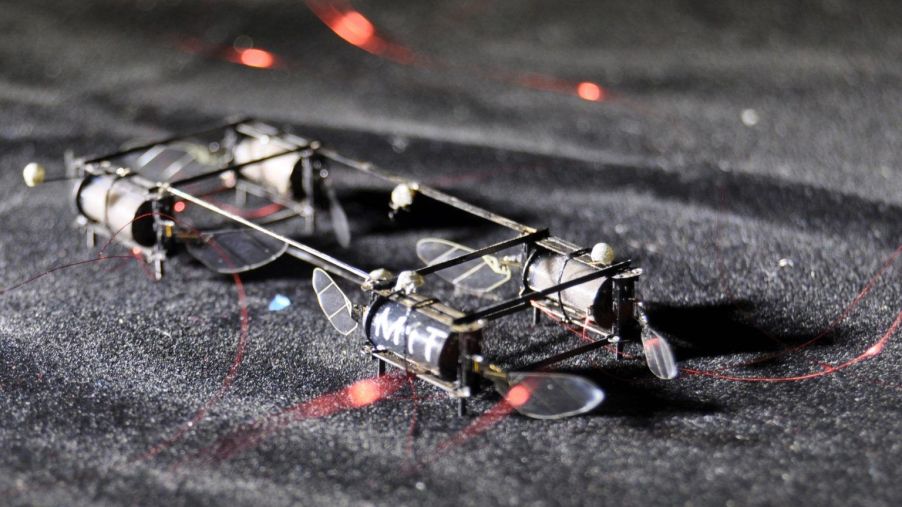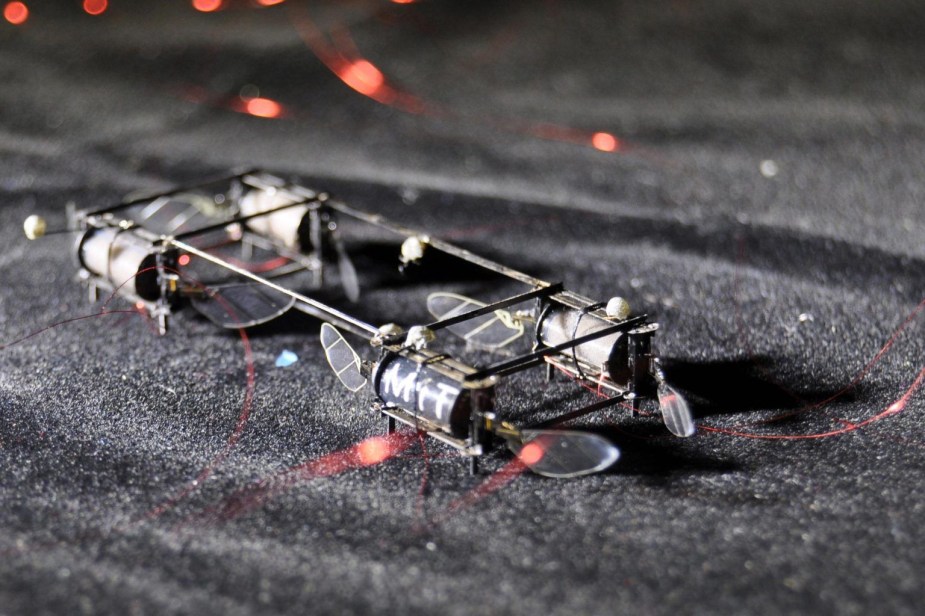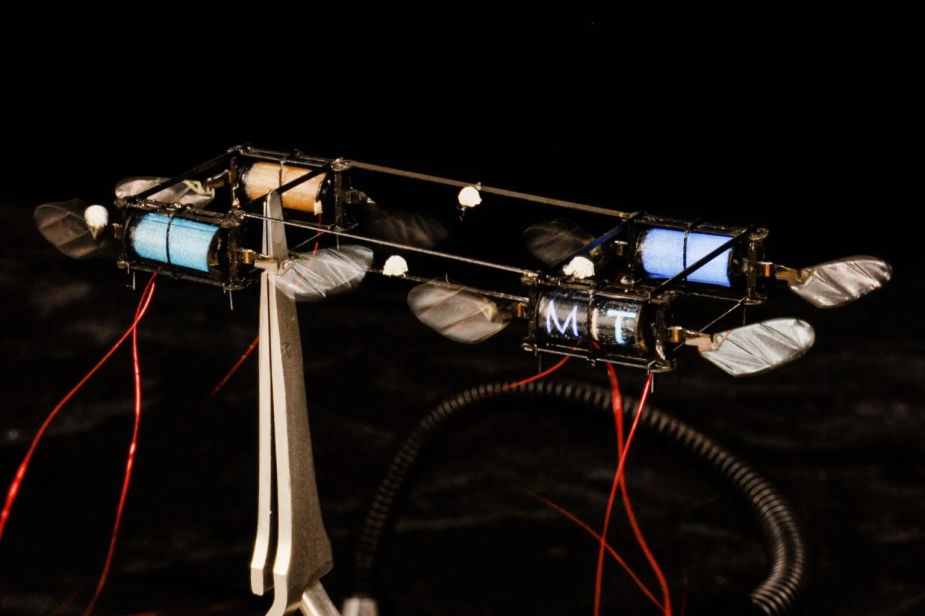
Tiny Flying Lightning Bug Robot Technology Built By MIT
What do robotic lightning bugs have to do with cars and mobility? With flying cars and personal jetpacks positioned to be the next big thing in mobility, technology will need to discover more compact, lighter, and cheaper ways to move forward. These tiny flying robot fireflies, created at MIT, could be the root of a whole new way to apply all of the above to electric vehicles. And it becomes easy to track and communicate with the robots.
How did MIT technology create artificial muscles for robots?

This began with the discovery of how to make electroluminescent artificial muscles. They control the wings, and also emit colored light when flying. Ultrathin layers of elastomer combined with carbon nanotube electrodes make up the muscles. They are stacked and then rolled into a cylinder. Then voltage is to the cylinder. Those electrodes squeeze the elastomer, resulting in flapping wings.
That elastomer gets mixed with zinc sulfate particles to create luminescence. This involved several additional steps to make it work. These included making the cylinders transparent and applying a strong high-frequency electric field. From this, the zinc particles and electrons emit subatomic photon particles. So the combination of a strong electric field and high-frequency light up the robot fireflies.
Why do the robot fireflies have wings that light up?
“Traditionally, electroluminescent materials are very energetically costly, but in a sense, we get that electroluminescence for free because we just use the electric field at the frequency we need for flying,” says Kevin Chen, assistant professor in the Electrical Engineering and Computer Science division of MIT. “We don’t need new actuation, new wires, or anything. It only takes about 3 percent more energy to shine out the light,” he told scitechdaily.
But there was a lot of trial and error throughout the development phase. “We put a lot of care into maintaining the quality of the elastomer layers between the electrodes,” says EECS graduate student Suhan Kim. “Adding these particles was almost like adding dust to our elastomer layer. It took many different approaches and a lot of testing, but we came up with a way to ensure the quality of the actuator.”
How much do the robot fireflies weigh?

All of this worked toward creating the robots, which weight no more than a paper clip. The advantage to the lighted muscles is that in a search and rescue in dark environs, like a collapsed building or cave, its lights could be used for signals as to its location and what it detected. The actuators now emit both multicolored and patterned light. And their light weight also allows them to carry extra sensors for tracking by infrared cameras. Could this be applied to flying cars?
They even manipulated the lights with masks and colored particles to spell out “MIT” in a light pattern. iPhones can track each actuator, which serves as a marker for tracking. By detecting each color and marker, a computer program can track its position and altitude. It becomes an infrared motion capture system on the cheap.
“We are very proud of how good the tracking result is, compared to the state-of-the-art. We were using cheap hardware, compared to the tens of thousands of dollars these large motion-tracking systems cost, and the tracking results were very close,” Chen says. “The wingbeat synchronized flash generation demonstrated in this work will make it easier for motion tracking and flight control of multiple microrobots in low-light environments both indoors and outdoors,” says assistant professor Kaushik Jayaram.



